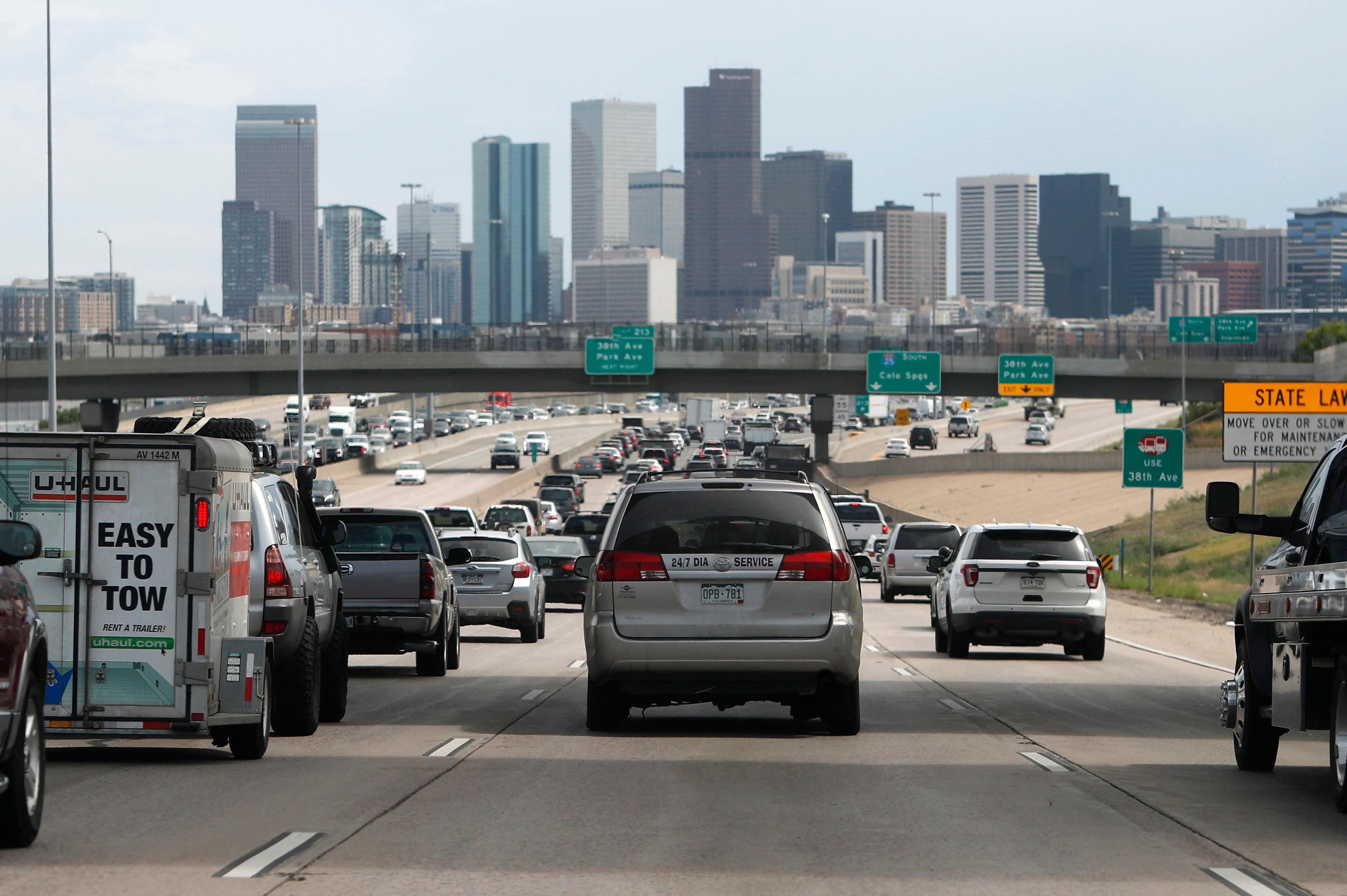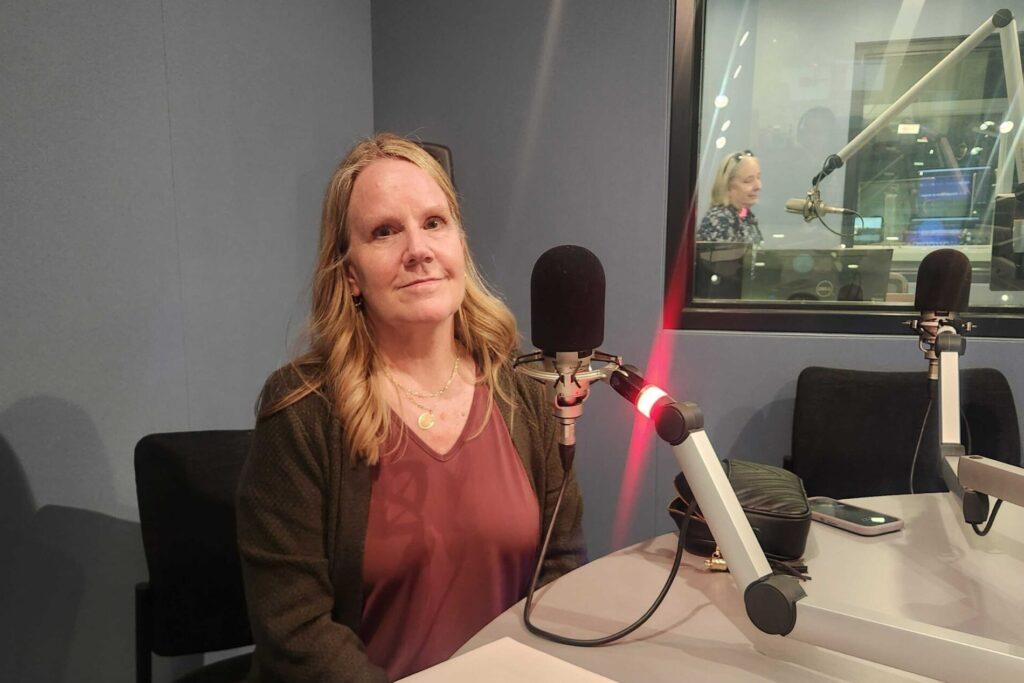
Colorado’s population trends are on a collision course with its housing shortage, according to state demographer Elizabeth Garner.
The state’s population sits at 5.8 million and it’s expected to grow slowly in the next decades, reaching 7.5 million by 2050.
What’s fueling the growth right now is an influx of young people, ages 22 to 37, who are coming to Colorado for jobs. But the biggest single segment of the population is older adults, many of whom remain in the homes where they raised their families.
“This is really the first couple of decades we have really had a lot of older adults,” Garner said. “So that will have an impact on the share of housing used for workers versus used for non-workers (retirees).”
That’s contributing to a housing shortage that began when the construction industry collapsed during the Great Recession, Garner said. She spoke with Colorado Matters host Chandra Thomas Whitfield.
Read the interview
This transcript has been lightly edited for clarity.
Chandra Thomas Whitfield: Your latest estimate has the state's current population at about 5.8 million people, and it's expected to go up to just over 6 million by 2025. Then looking out to 2050, that number is 7.5 million. Big numbers, but that's still a pretty slow increase. Where is that growth expected to come from?
Elizabeth Garner: So there are three things that cause growth or cause population change: births, deaths, and net migration. Births, by far, are the largest contributor to our population change. We've got about 60,000 births per year. But we then subtract deaths from that, where we've got about 45,000 deaths per year. That's called natural increase. On top of that, we have net migration. So recently, that's been closer to 15,000, but it's been as high as 60,000 in 2015. So over the next several decades, through 2050, we think that births are still going to be the largest total contributor, but because of the increasing deaths, that's going to push that down a little bit. But then, migration would be the other component leading to that change.
Can you paint a picture for us? Who are these folks moving to Colorado? And what do they do for a living?
We mostly attract young adults; 22 to 37 is our bread and butter, and most of them come with an occupation, they come for a job. So we do get some young adults who come for school at one of our universities and stay. But a lot of them also just come and they've got jobs here. The jobs will range from high-wage jobs in professional technical services, so some of the IT jobs. But we also attract folks that will come to fill the accommodations, food service-type jobs. A lot of those are maybe temporary, so they're doing these jobs until they can get their real career started.

So 22 to 37, relatively young people, and that contrasts with a trend we've seen in Colorado for a while, which is that the state's population overall is aging. Am I correct?
Absolutely. So our first big group of migrants came in the ‘70s, and they were the Baby Boomers. They came and they've stayed, and they've aged in place. Now, they're aging into the 65 plus. So for the last decade, this decade, and probably next, the following decade, between 2040 and 2050, the fastest growing age group is our 65 plus. And actually, it's even a little bit older. Our 75- to 84-year-olds, if we look at just one 10-year age group, are by far the fastest growing and most growth in the state. And an interesting kind of statistic that we played with is that, if we had no migration at all, zero migration, our only age group to grow would be the 65 plus. So when we have these conversations about migration and do we like people, do we want people to move to the state, the point is, if we want to fill jobs, we will need those migrants to come to the state.
So you have a growing number of people who are working and having families, and also a growing number who have retired or are heading in that direction. How does that play out for the state's economy and our way of life here?
It will make a big impact. So we've got about 40,000 people a year retiring from the labor force. We're expecting about 400,000 over this decade. Last decade, it was about 50,000 a year retiring and leaving the labor force. That leaves a huge gap. People need to fill those jobs. So that's one reason we have migration to the state is to fill those positions. But also, any new jobs that we create, and we're forecasting that we’ll create about 40,000 new jobs a year, and we've got about 40,000 that retire a year, it means we need about 80,000 people to fill jobs a year. And we can't do it just with those that live here. That's why we need people to move in from out of state. So this has a huge impact on the economy, and it's why our labor force is as tight as it is because we've got this growing number of retirees in the state.
Whitfield: And are older people staying in their houses longer than they used to?
No, they're staying in their houses as they always have. It's just that we've never had a lot of older people. This is really the first couple of decades we have really had a lot of older adults.
Colorado already has a housing shortage. How will this variety of age groups play into that?
The way that it impacts the state right now is the fact that we don't see a lot of churn in the state, because of our older population that doesn't move as often. So when we had a larger share of our population in younger age groups, that moved often, you would see more churn in the housing. A lot of people will age in place. It doesn't necessarily negatively affect the housing market at all. But what it does do is it changes it from only being primarily workers to also being workers and retirees. So I'm hoping this decade, with luck, that I'll retire and age in place. My house used to accommodate four people. Now, it accommodates two, because I've got two children who’ve moved out. My husband and I hopefully will both retire. Now, that house will no longer house any worker. It will only house retirees, and that's happening to about 400,000 people over this decade. So that will have an impact on the share of housing used for workers versus used for non-workers.
Let's talk about low-income folks. What are the services they're going to need as they age?
The same services that they've needed over time. So we've always had older adults. We've always had a variety of incomes in older adults, from very poor to very rich. They're going to need the same services that they always had. So they might need assistance with housing. They may need assistance with any kind of food, medication, transportation, where they can't get that either on their own or with family, that they'll just need more services.
So this could have a fairly big impact on areas, where, even without a change in the percent of our population that's in poverty, that are older, we're just going to have so many more people that are older, that we'll also get more people that need assistance. So I think we've got these things called area agencies on aging, and they help support especially the lower income older adults. They're just going to have a lot more demands put on them.
Actually, I’ve thought about that. I'm actually in a couple of online groups for those with aging parents, and there are a lot of resources being passed back and forth. "Hey, where can I go for this? Where can I go for that?" And many times, these are the children trying to find resources for their parents
Absolutely.
So in regards to this housing issue, there is kind of a supply log jam here, fewer people per house, the older folks staying in their homes longer, and the newcomers needing places to live.
Absolutely. And on top of the log jam of that piece, we also didn't build during the Great Recession. So from about 2007, all the way until about 2018, we really stopped building housing units because of the financial crisis. There wasn't funding available to build. So you go 10 years without building, you're still having population growth, that tightens up that housing market even more so. We finally start building in 2018, then we have COVID, and everybody's working from home or a lot of people are working from home, so the demand for housing increases. We had really low interest rates before last year. So the demand for housing grows. We don't build. We have an aging population with a smaller household size. It's almost the perfect storm causing this supply log jam for housing.
I know you don't make the laws or the policies, but your numbers and projections certainly could provide some guidance. How do you suggest breaking that log jam?
I really actually don't have a lot of really good ideas on how you break the log jam, and that's why we've got a lot of policymakers that are a lot brighter than I am on that side. But they do use our data and information to do that planning. What we need to try to do is basically build, but also, build reasonably, not put too much pressure on community services. If you force communities to build beyond their capacity, then they're going to have a really hard time meeting the need of their population. So come up with a building plan. We know what kinds of people we have and where the demand is for housing.
So build those products and keep it nice and steady. The boom and bust cycle that we've had historically in construction is what really destroys the industry. We lost over 70,000 jobs in construction during the Great Recession, and it has taken us basically 10 years to try and recover that industry. We lost the employees. We lost the supply chains. We lost the firms. We lost the input suppliers. And so, we don't want to do that again. So let's just not do that. That would be my goal.
So what about condos? Is that an option maybe for older adults to consider moving into condos, maybe a lower maintenance situation?
Absolutely. I think every housing product type is something that we should be looking at, remembering that we're not all the same. There's some older adults that will want the condos. Certainly, they're going to want the purchase option. Most older adults want to own, because they want that price security. They don't want to deal with rents that might continue to grow.
So, looking for ownership options at different sizes, with different amenities, at different costs, is something that we need. And we know that we've had a challenge with condos, and I believe the policymakers are going to be looking at condos this next legislative session to try and improve those numbers. Because that's really where we've also seen a dearth in production. We just haven't been building condos, like other states or the average for the country as a whole.








